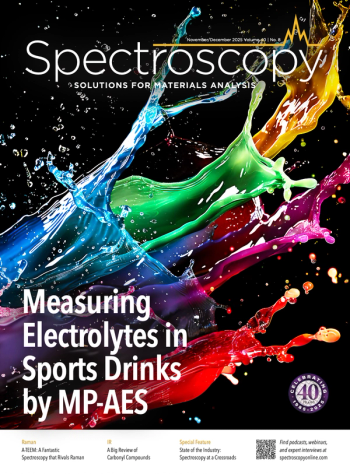
Chaos Theory and Raman Spectroscopy Used to Detect Cancer
A recent study combined Raman spectroscopy with chaos theory to improve the reliability of diagnosing several types of cancers.
Early diagnosis is essential to improve outcomes for cancer patients, and many scientists are focused on investing in new detection technologies that can rapidly, accurately, and efficiently diagnose and detect cancerous tumors in patients.
A recent study published in Expert Systems with Applications explored this issue in depth. Researchers from Xinjiang University in China unveiled a new approach to diagnose serious diseases that uses Raman spectroscopy in conjunction with chaos theory (1). Their study examined their method’s effectiveness in diagnosing lung cancer, glioma, renal cell carcinoma, and esophageal cancer (1).
Chaos theory, a fundamental branch of mathematics, has found applications across various fields such as physics and medicine (1–3). Chaos theory helps explain the dynamics of weather systems, and it has helped lead to us learning more about the nature of the universe (3). Chaos theory was used in this study to analyze nonlinear time series data derived from Raman spectral time domain curves. The goal, the scientists said, is to improve the performance of disease diagnostic models and pave the way for intelligent, artificial intelligence (AI)-assisted disease diagnosis (1).
Three different methods were used to identify characteristics of time domain Raman spectra. The researchers then extracted chaotic features, including correlation dimension and Kolmogorov entropy, to serve as inputs for several machine learning (ML) models: extreme learning machine (ELM), back propagation neural network (BPNN), K-nearest neighbor (KNN), and support vector machine (SVM) (1).
The researchers analyzed the Raman spectra using traditional spectral feature extraction and modeling techniques to evaluate how well their chaotic feature extraction method. The results revealed that chaotic features, when extracted across the full spectral range, yielded diagnostic results on par with those obtained from conventional methods (1).
By dividing the full spectrum into three consecutive subsequences (500–1000, 1000–1500, and 1500–2000 cm−1), the researchers were able to further validate the importance of chaos theory (1). The experimental steps were repeated for each subsequence, and the performance of chaotic feature modeling was compared against traditional spectral analysis techniques (1). As the experimental steps showed, the diagnostic performance of chaotic features in each subsequence surpassed that of conventional methods.
Chaos theory has not been integrated with Raman spectroscopy in a previous study, the authors write. The researchers demonstrated that serum Raman spectral data, when converted to the time-domain form, exhibits chaotic characteristics (1). By extracting effective chaotic features and time-domain features from this data and applying them to machine learning models, they achieved diagnostic results comparable to those of traditional spectral analysis techniques (1).
This study introduces a new potential way to diagnose disease, opening numerous pathways for future studies. Although more work needs to be done, the integration of chaos theory with machine learning models could present an accurate, reliable, and efficient diagnostic tool (1). The potential to integrate chaos theory with other spectroscopic techniques could lead to even more advanced diagnostic models, ultimately improving patient outcomes and advancing the field of medical diagnostics, the scientists wrote (1).
References
(1) Liu, Y.; Chen, C.; Tian, X.; et al. A Prospective Study: Advances in Chaotic Characteristics of Serum Raman Spectroscopy in the Field of Assisted Diagnosis of Disease. Expert Sys. Appl. 2024, 238A, 121787. DOI:
(2) Oestreicher, C. A History of Chaos Theory. Dialogues Clin. Neurosci. 2007, 9 (3), 279–289. DOI:
(3) Sutter, P. Chaos Theory Explained: A Deep Dive into an Unpredictable Universe. Space.com. Available at:
Newsletter
Get essential updates on the latest spectroscopy technologies, regulatory standards, and best practices—subscribe today to Spectroscopy.


